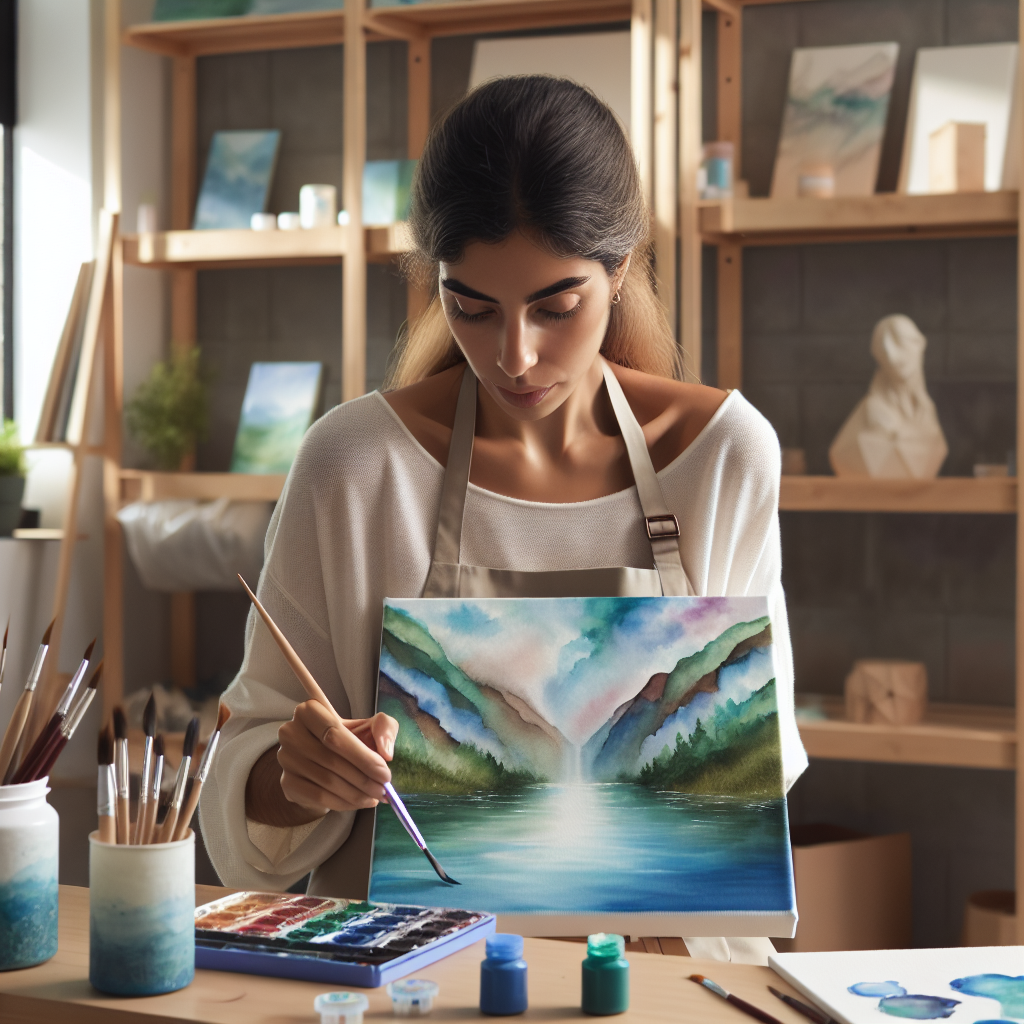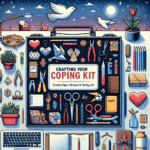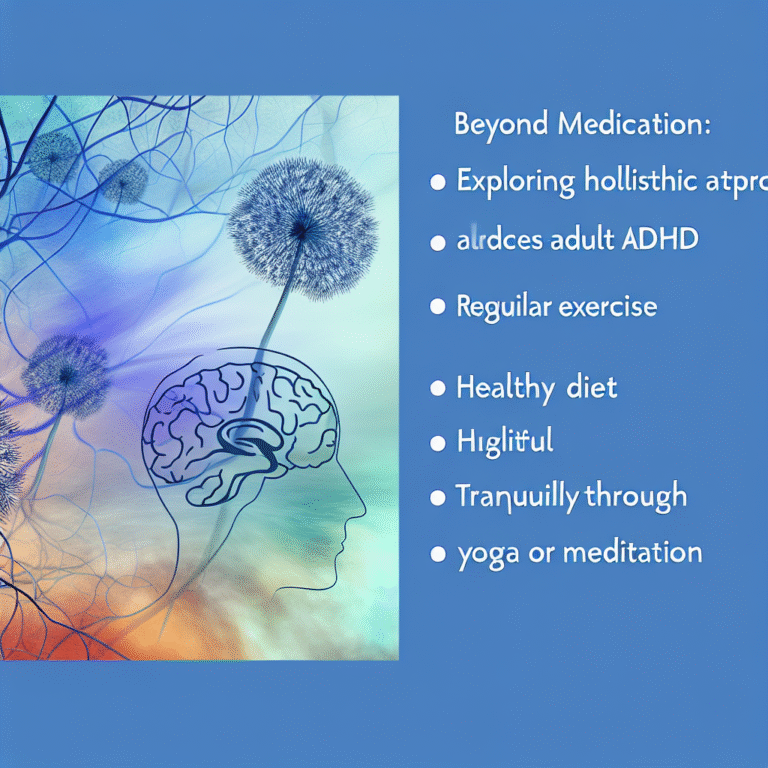
A Brush with Serenity: How Art Therapy Helps Manage Anxiety
In a world that moves faster than ever, anxiety has become a silent epidemic, affecting millions globally. While traditional therapy has its place, an innovative approach to mental wellness is capturing the attention of those in search of serenity: art therapy. A Brush with Serenity: How Art Therapy Helps Manage Anxiety is not just a catchy phrase; it’s a transformative journey that connects emotional healing with creative expression. This article delves deep into the power of art therapy, showcasing its effectiveness for anxiety management while exploring real-world applications, insightful case studies, and practical strategies you can use today.
The Relevance of Art Therapy in Today’s Society
As we navigate the complexities of the modern world, the need for effective mental health solutions cannot be overstated. Anxiety disorders have become one of the most common mental health challenges, affecting people of all ages, backgrounds, and lifestyles. The World Health Organization (WHO) reports that approximately 264 million people suffer from depression, often intertwined with anxiety disorders. While medication and conventional therapy can be beneficial, art therapy offers a unique, non-invasive method that fosters self-expression, promotes relaxation, and serves as an emotional outlet.
Defining Art Therapy
Art therapy is a clinical and therapeutic approach that uses the creative process of making art to improve a person’s physical, mental, and emotional well-being. This form of therapy can include various mediums, such as painting, drawing, sculpture, and collage. Unlike traditional talk therapy, where the focus is on verbal communication, art therapy emphasizes visual expression, allowing individuals to explore their feelings and emotions in a non-threatening way. A Brush with Serenity: How Art Therapy Helps Manage Anxiety reflects the essence of this therapeutic modality—drawing out emotions and experiences onto a canvas can often reveal what words cannot.
Understanding Anxiety and its Impact
Before we dive into the therapeutic benefits of art, it’s crucial to understand anxiety and its implications. Anxiety can manifest in various forms, including generalized anxiety disorder, social anxiety, panic disorder, and others. Symptoms often include the following:
- Persistent worrying or fear
- Restlessness or feeling on edge
- Difficulty concentrating
- Physical symptoms like headaches, stomachaches, or muscle tension
These symptoms can significantly hinder day-to-day functioning, relationships, and overall quality of life.
Case Study: Emily’s Journey Through Art Therapy
Emily, a 29-year-old graphic designer, faced intense anxiety as her job demands increased. Despite her love for creating, deadlines turned her passion into a source of stress. In search of relief, she turned to art therapy.
During her sessions, Emily discovered that expressing her feelings through painting helped alleviate her anxiety. By engaging in creative activities without judgment, she learned to confront and manage her anxieties. After a series of sessions, Emily reported feeling a sense of liberation and newfound clarity, as A Brush with Serenity: How Art Therapy Helps Manage Anxiety forged a path to self-acceptance.
The Science Behind Art Therapy
Art therapy leverages the connection between creativity and psychological well-being. Neuroscience has shown that engaging in creative activities activates different areas of the brain, promoting emotional regulation. When individuals immerse themselves in artistic pursuits, dopamine releases can elevate mood, which is essential in anxiety management.
How Art Therapy Works
Expression without Words: Sometimes, the act of creating art can help individuals express feelings and thoughts that are difficult to articulate. By engaging in art, individuals can visually communicate their experiences and emotions.
Stress Reduction: Engaging in art can produce a calming effect, reducing stress and anxiety levels. The process allows individuals to focus on the creation rather than the worries that consume their thoughts.
Mindfulness and Presence: Art therapy encourages individuals to be present in the moment, creating a meditative experience. This mindfulness can counteract anxiety, helping individuals find calm amid chaos.
- Self-Discovery: Through the creative process, individuals may uncover underlying issues contributing to their anxiety. This self-discovery can be a foundational step toward healing.
Chart: The Benefits of Art Therapy on Anxiety Management
| Benefit | Description |
|---|---|
| Emotional Expression | Facilitates communication of complex feelings |
| Stress Relief | Provides a calming effect through creativity |
| Mindfulness | Encourages present-moment awareness |
| Self-Discovery | Uncovers underlying emotions and triggers |
| Community Building | Fosters connections with others in group settings |
Techniques and Practices in Art Therapy
Art therapy is adaptable, allowing for both group and individual sessions. Here are some common techniques used in art therapy to help manage anxiety:
1. Mandala Creation
Creating mandalas can be a soothing practice. The repetitive nature of drawing patterns fosters mindfulness, allowing the individual to focus and calm the mind.
2. Collage Making
Assembling a collage of images, words, or textures can help individuals express their feelings without the pressure of creating a perfect artwork. This technique encourages exploration and allows participants to convey emotions visually.
3. Expressive Painting
In expressive painting, individuals are encouraged to let go of control and to paint freely, using colors and forms that resonate with their emotions. This method allows for the exploration of deep-seated feelings and can produce cathartic releases.
4. Nature Art
Incorporating natural materials, such as leaves and flowers, can add texture and grounding to the creative experience. This practice harnesses the therapeutic benefits of being in nature while engaging in artistic expression.
5. Journaling Through Art
Combining writing and drawing, participants keep a visual journal that captures their thoughts and feelings over time. This technique promotes reflection and can illuminate patterns in one’s anxiety responses.
Case Study: Michael Finds Clarity Through Mandalas
Michael, a 35-year-old engineer, struggled with severe anxiety, often leading him to ruminate on his feelings. After attending art therapy sessions focused on mandala creation, Michael discovered that the repetitive, circular patterns helped him quiet his racing thoughts. The process became a meditative practice, ultimately aiding him in understanding the root of his anxiety. His story exemplifies how A Brush with Serenity: How Art Therapy Helps Manage Anxiety can help uncover pathways to peace.
Overcoming Barriers to Accessing Art Therapy
Despite its benefits, many individuals may hesitate to engage in art therapy due to misconceptions or accessibility issues. Some common barriers include:
The Myth of Artistic Talent
Many believe that they must be ‘good’ at art to benefit from art therapy. It’s essential to understand that the therapeutic process focuses on expression rather than technical skill. The uniqueness of every individual’s creative process produces valuable insights.
Financial Constraints
Art therapy may not always be covered by insurance, posing a barrier for some. However, community-based organizations and art programs often offer sessions at lower costs, providing valuable resources to those in need.
Finding Qualified Art Therapists
Not every art teacher or instructor qualifies as a licensed art therapist. It’s crucial for individuals seeking therapy to research and connect with certified professionals, ensuring that they receive the support and guidance necessary for effective healing.
Conclusion: Embracing Art as a Path to Serenity
A Brush with Serenity: How Art Therapy Helps Manage Anxiety encapsulates the profound impact that creative expression can have on mental clarity and well-being. As we navigate the challenging waters of anxiety, art therapy illuminates a path toward self-discovery, healing, and empowerment. By engaging in art, individuals can find solace in creativity, transforming their struggles into vibrant expressions of hope.
Incorporating art into one’s life doesn’t require a formal therapy session. Simple creative practices, like doodling, journaling, or coloring in an adult coloring book, can be effective personal outlets. Remember, the beauty of art is in its imperfection—allowing yourself to create without judgment is essential in this journey toward serenity.
FAQs About Art Therapy and Anxiety Management
What is the difference between art therapy and regular art classes?
- Art therapy is conducted by licensed therapists who use art to promote emotional healing and self-expression, while regular art classes focus on teaching artistic techniques.
Is art therapy effective for everyone?
- While many find significant relief through art therapy, its effectiveness varies from person to person. It may complement traditional therapy for those with anxiety.
How can I find an art therapist?
- Look for qualified professionals through organizations like the American Art Therapy Association or consult with mental health providers who may offer art therapy as part of their services.
Can I practice art therapy techniques at home?
- Yes! Techniques such as journaling through art, expressive painting, or mandala creation can be done independently to provide therapeutic benefits.
- What materials do I need to get started with art therapy?
- Basic supplies include paper, colored pencils or markers, paints, scissors, and glue. The focus should be on expression rather than perfection, so there are no strict requirements.
In conclusion, the journey through anxiety can be daunting, but A Brush with Serenity: How Art Therapy Helps Manage Anxiety offers a supportive framework for healing through art. Engage your creativity, embrace the process, and allow yourself to discover the calming and transformative power of art therapy. As you embark on this exploration, remember that every stroke of the brush can lead you closer to a more serene and centered self.















